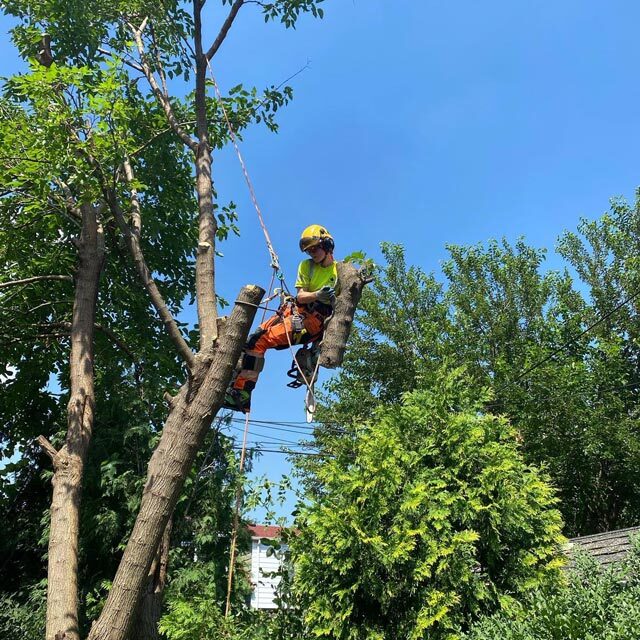Protect your commercial property from the liability of unsafe trees.
Sometimes a tree is beyond repair and needs to be removed due to storm damage, property development, tree disease, crowding, hazard to people, or undesirable tree species for its location. This is especially true for commercial and multi-unit residential properties, where damaged trees can pose a serious risk to people and property.

Tree removal may become necessary due to one or more of the following situations.
The specific type of pruning needed depends on factors such as tree species, age, health, and the desired outcome. Consulting with a certified arborist can help determine the most appropriate pruning approach for a particular tree.
Disease or infestation
Trees affected by severe diseases or infestations that cannot be effectively treated may need to be removed to prevent the spread to other trees.
Structural issues
Trees with compromised structural integrity, such as extensive decay, hollow trunks, or significant leaning, pose a safety risk and may require removal.
Storm damage
Trees damaged by storms, including broken branches or uprooting, may need to be removed to ensure the safety of the property and its occupants.
Proximity to structures
Removal of lower branches to provide clearance for buildings, pedestrians, or vehicles.
Root issues
Trees with extensive root damage, causing issues like pavement upheaval, plumbing damage, or compromising the stability of nearby structures, may need removal.
Overcrowding
In cases where trees are densely packed or competing for resources, removal may be necessary to allow healthier growth for the remaining trees.
Construction or renovation
Trees may need to be removed to make way for construction projects or property renovations, ensuring a smooth and safe process.
Legal or regulatory compliance
Compliance with local regulations, permits, or safety standards may necessitate the removal of certain trees on commercial properties.